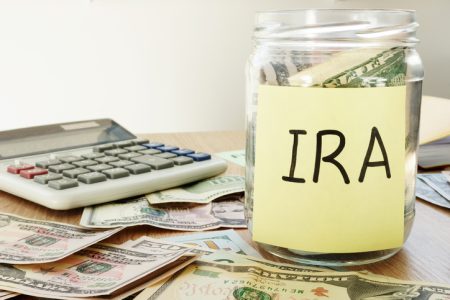If you work in the education, healthcare or nonprofit sector, you’ve likely asked an important question regarding your plan for retirement: how much should I put in my 403(b) per paycheck? The right amount to contribute depends on several factors, including your age, salary, employer match and overall retirement strategy. Whether you are just starting out or ramping up your savings later in your career, your 403(b) can be a powerful tool for building wealth over time.
A financial advisor can help you evaluate your income, budget and goals to determine the most effective contribution strategy for your situation.
How Much Should You Put in Your 403(b) Per Paycheck?
Financial professionals often recommend contributing between 10% and 15% of your gross income toward retirement. This includes contributions to a 403(b) plan. If you are fortunate enough to have an employer offering a matching contribution, that match typically counts toward this total. For example, if your employer contributes 5%, you may only need to contribute 10% to reach the recommended 15% benchmark.
If you cannot afford to contribute that much right away, start with what you can. Even contributing 5% of your paycheck can make a difference, especially if your employer matches a portion. The important thing is to start somewhere and then gradually increase your contributions over time. Many 403(b) plans also offer the option to set automatic annual increases. This can help boost your savings without putting stress on your budget.
Ultimately, the right amount to contribute depends on your individual financial circumstances, including your other savings goals, debt obligations and expected retirement timeline. A financial advisor can help you determine the optimal contribution strategy for your situation.
The Importance of Maximizing Your Employer Match
Many employers offering 403(b) plans also provide a matching contribution. This is essentially free money for your retirement. Failing to claim it is like leaving part of your paycheck on the table.
Suppose you earn $60,000 annually and contribute 5% of your salary ($3,000 per year) to your 403(b) plan. Your employer offers a 100% match on that 5%, contributing an additional $3,000 per year. If both you and your employer contribute for 10 years and your investments earn an average annual return of 7%, your total balance would grow to approximately $85,000 during that time.
Now, if you didn’t receive any employer match and contributed the same $3,000 annually on your own, your retirement account would grow to about $42,000.
That is a difference of approximately $43,000 and is essentially free money earned through your employer match and compound growth. This is why earning your full employer match is one of the most effective ways to boost your retirement savings.
If you are unsure about your employer match, check your plan documents or speak with your HR department.
The Role of a 403(b) in Your Retirement Planning

A 403(b) plan is a powerful retirement savings tool, particularly for employees of public schools, non-profits and certain government organizations. One of the main advantages is that you you can make tax-deferred contributions. This means you will not pay income tax on your contributions or investment gains until funds are withdrawn in retirement.
Depending on your situation, your 403(b) plan may be just one part of a broader retirement strategy. There are other options to consider, as well.
Traditional and Roth IRAs
IRAs provide additional retirement savings opportunities beyond your 403(b). A traditional IRA allows for tax-deferred growth, similar to a 403(b). In contrast, Roth IRA withdrawals in retirement are tax-free because the contributions are made using money that’s already been taxed.
They are subject to an annual contribution limit of $23,500 for employees in 2025. This applies to 401(k) plans, as well as 403(b) plans, 457 plans and the federal government’s Thrift Savings Plan. Workers who are 50 and older can contribute an extra $7,500 per year to these plans. And thanks to a provision of the SECURE 2.0 Act, you can save an extra $11,250 in 2025 if you’re between ages 60 and 63, bringing your total contribution to $34,750.
These accounts are ideal for diversifying the tax treatment of your retirement income.
Health Savings Accounts (HSAs)
With a high-deductible health plan, putting money into a health savings account (HSA) can be an efficient way to manage healthcare costs—contributions reduce your taxable income, investments grow without tax, and withdrawals for eligible medical expenses aren’t taxed either. In retirement, you can also use HSA funds for general expenses after age 65. However, they will be taxed as income if not used for medical costs.
For 2026, the HSA contribution limits increase from $4,300 in 2025 to $4,400 for self-only health coverage while family coverage increases from $8,550 to $8,750.
Brokerage Accounts for Additional Flexibility
How to Ensure You’re Prepared for Retirement
Contributing to a 403(b) is a prudent decision, but it is also important to evaluate your total retirement readiness. That means considering not just your savings but your future income needs, as well.
Your retirement plan should also take inflation and market volatility into account. The sooner you begin planning, the more options you will have for adjusting your savings strategy, investment mix and retirement age.
Bottom Line

There is no one-size-fits-all answer when it comes to how much you should put in a 403(b) per paycheck. However, aiming for 10% to 15% of your gross income is a solid starting point. At the very least, you should contribute enough to receive the full employer match if one is offered. Over time, even small increases in your contribution rate can significantly boost your retirement savings.
Tips for Saving for Retirement
- A financial advisor can help you build a retirement plan tailored to your goals, risk tolerance and income. Finding a financial advisor doesn’t have to be hard. SmartAsset’s free tool matches you with vetted financial advisors who serve your area, and you can have a free introductory call with your advisor matches to decide which one you feel is right for you. If you’re ready to find an advisor who can help you achieve your financial goals, get started now.
- Placing tax-efficient investments like index funds in taxable accounts and tax-inefficient assets—such as REITs or bond funds—in tax-deferred or Roth accounts can improve overall portfolio efficiency and long-term after-tax performance. This strategy is known as asset location.
Photo credit: ©iStock.com/nortonrsx, ©iStock.com/supersizer, ©iStock.com/AscentXmedia
Read the full article here









